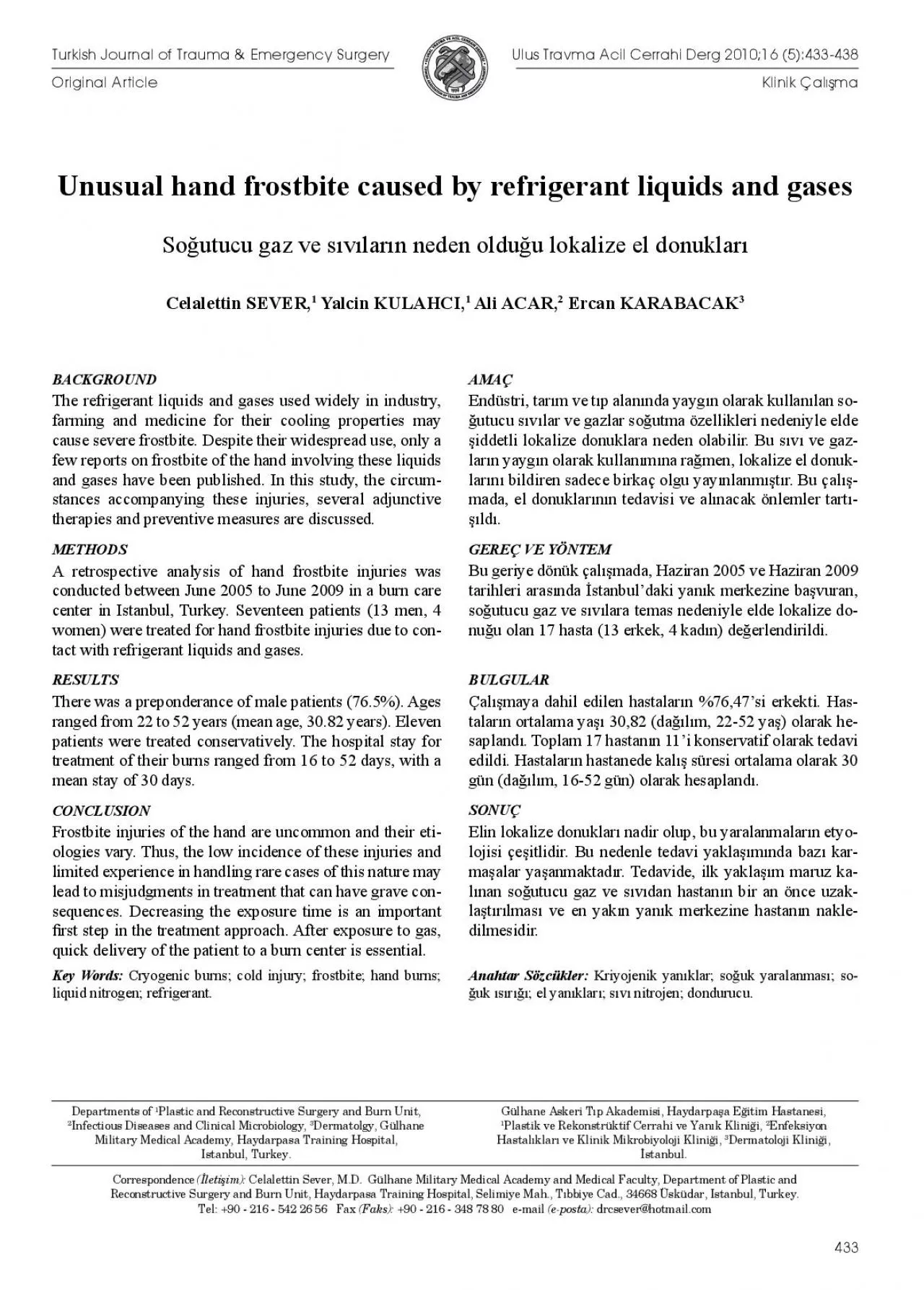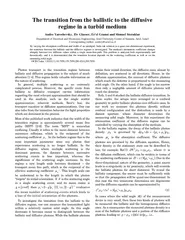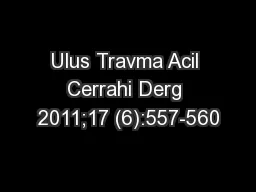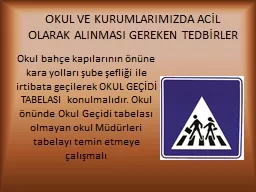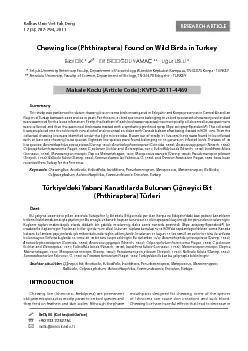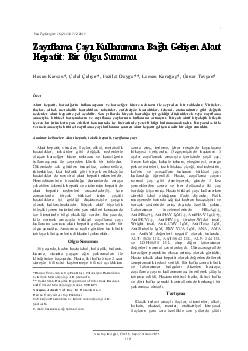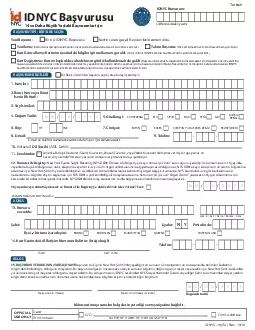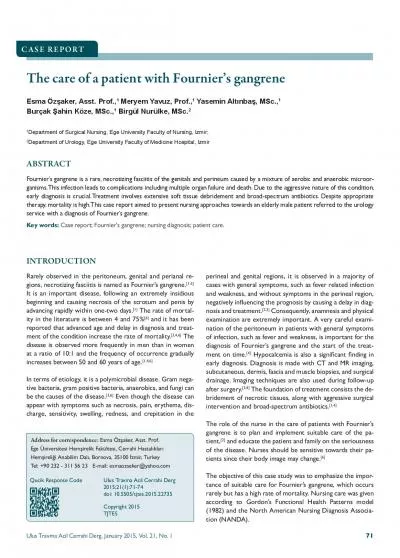PDF-Ulus Travma Acil Cerrahi Derg 201016 5433438
Author : ash | Published Date : 2022-09-23
Unusual hand frostbite caused by refrigerant liquids and gases Yalcin KULAHCI Ali ACAR Ercan KARABACAK Departments of Plastic and Reconstructive Surgery and Burn
Presentation Embed Code
Download Presentation
Download Presentation The PPT/PDF document "Ulus Travma Acil Cerrahi Derg 201016 543..." is the property of its rightful owner. Permission is granted to download and print the materials on this website for personal, non-commercial use only, and to display it on your personal computer provided you do not modify the materials and that you retain all copyright notices contained in the materials. By downloading content from our website, you accept the terms of this agreement.
Ulus Travma Acil Cerrahi Derg 201016 5433438: Transcript
Download Rules Of Document
"Ulus Travma Acil Cerrahi Derg 201016 5433438"The content belongs to its owner. You may download and print it for personal use, without modification, and keep all copyright notices. By downloading, you agree to these terms.
Related Documents

